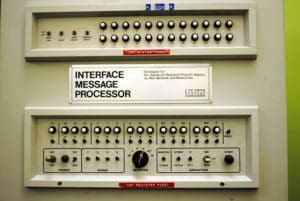 A network-wide crash equals one of the worst work days ever, right? Hopefully you won’t be faced with one anytime soon, but if you are, take solace in the knowledge that they’ve always been a problem. On Oct. 27, 1980, the ARPANET—the U.S. Department of Defense’s precursor to the Internet—experienced a four-hour downtime when two Interface Message Processors (IMPs) miscommunicated simultaneously. The result of the malfunction was something akin to a distributed denial of service (DDoS) attack.
A network-wide crash equals one of the worst work days ever, right? Hopefully you won’t be faced with one anytime soon, but if you are, take solace in the knowledge that they’ve always been a problem. On Oct. 27, 1980, the ARPANET—the U.S. Department of Defense’s precursor to the Internet—experienced a four-hour downtime when two Interface Message Processors (IMPs) miscommunicated simultaneously. The result of the malfunction was something akin to a distributed denial of service (DDoS) attack.
What caused the ARPANET crash
ARPANET (launched Oct. 29, 1969) consisted of four communications nodes: one each at UCLA, Stanford Research Institute, the University of California–Santa Barbara, and the University of Utah. IMPs—the predecessor to routers—served to standardize messages sent on the network. On that fateful day in 1980, however, IMP29 was experiencing a hardware failure that caused it to drop bits—an issue that caused IMP50 to receive messages with bad timestamps.
The timestamps were then repeated across the network over and over and over. (See the DDoS comparison.) The software designed to delete status messages couldn’t handle the influx, and nodes quickly overloaded. The only solution was to shut down every node and restart them manually. (For the nitty-gritty, read this report.)
Interestingly enough, ARPANET had a system in place to detect bit-dropping—but the system had been deactivated. Take this as yet another reminder that network management tools are the MSP’s best friend.
Tech Time Warp is a weekly feature that looks back at interesting moments and milestones in tech history.
Photo: Andrew “FastLizard4” Adams via Flickr.com. Used under CC 2.0 License.
